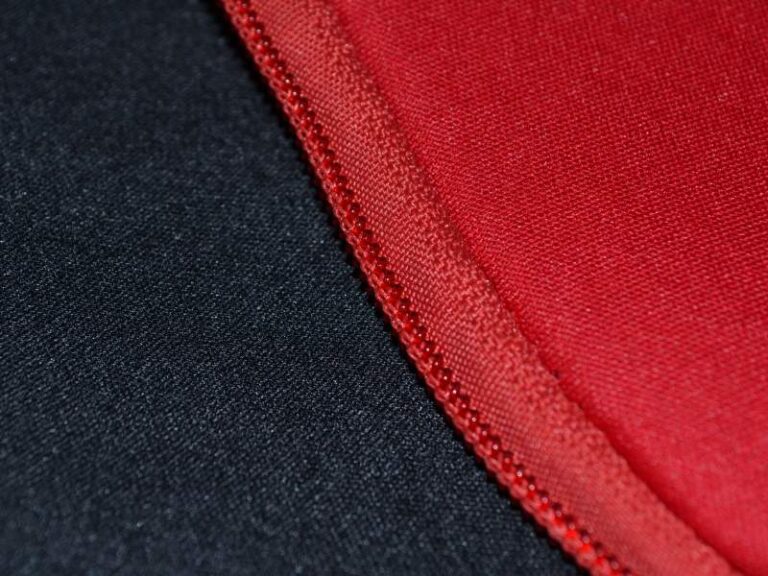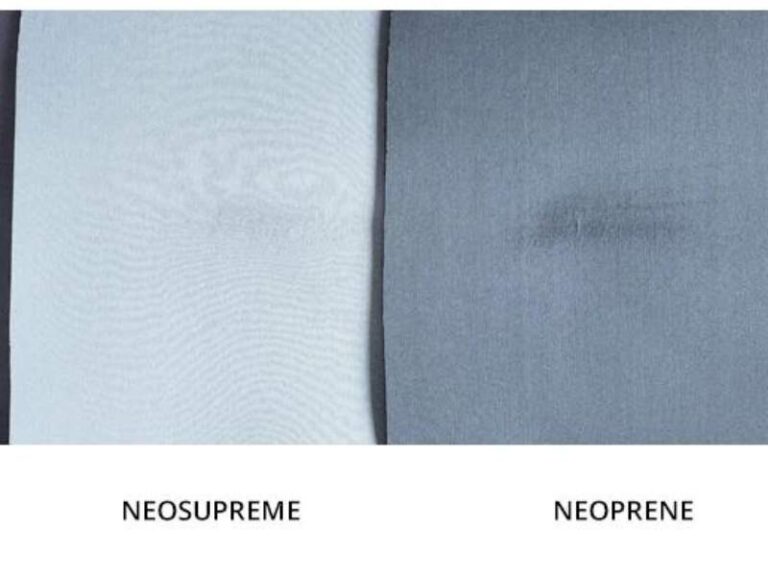Is Synthetic Leather Superior to Real Leather for Car Seats?
Synthetic leather is not necessarily better than real leather in car seats. Read on to learn about the pros and cons of each material to make an informed decision for your car’s interior upholstery.
When it comes to choosing the right material for your car seats, the decision between synthetic leather and real leather can be a tough one. Both options have their strengths and weaknesses, and it ultimately depends on your personal preferences and priorities.
Synthetic leather, also known as faux leather or vinyl, is a man-made material designed to mimic the look and feel of real leather. It is generally more affordable, easier to clean and maintain, and can be made in a variety of colors and textures. On the other hand, real leather exudes a luxurious and timeless appeal, as well as durability and breathability.
However, it often comes with a higher price tag and requires regular care and conditioning to prevent drying and cracking. So, before making a decision, consider factors like your budget, desired aesthetic, and long-term maintenance plan.
Understanding Car Seat Materials
Synthetic leather is increasingly becoming a popular choice for car seats due to its many advantages. Unlike real leather, which is made from animal hide, synthetic leather is a man-made material. It is composed of a fabric base, usually polyester or nylon, which is then coated with a layer of polyurethane (PU) or vinyl. This coating gives synthetic leather its leather-like appearance and texture.
The process of producing real leather involves various steps, such as tanning the raw animal hide to preserve it and remove any hair or proteins. This is followed by drying, dyeing, and finishing processes. On the other hand, synthetic leather is manufactured using a more controlled and efficient process, requiring fewer resources and time.
Furthermore, synthetic leather offers several advantages over real leather. It is more resistant to scratches and stains, making it ideal for car seats that are subjected to daily wear and tear. Synthetic leather is also easier to clean and maintain, as it can be wiped down with a damp cloth.
In conclusion, synthetic leather is a viable alternative to real leather for car seats. Its composition and production process make it a durable, easy-to-maintain material that provides similar aesthetic appeal to genuine leather.
Comparing Durability And Maintenance
When comparing the durability and maintenance of synthetic leather and real leather car seats, it is important to consider the lifespan of both materials.
Synthetic leather, also known as faux leather or vinyl, is typically more durable than real leather. It is resistant to stains, fading, and cracking, making it a popular choice for car seats. Synthetic leather can withstand daily wear and tear, including spills and exposure to sunlight, without showing signs of damage.
On the other hand, real leather requires more maintenance to keep it looking and feeling its best. It is susceptible to stains, fading, and cracking if not properly cared for. Real leather car seats need to be regularly cleaned and conditioned to maintain their softness and prevent the leather from drying out or becoming damaged.
| Lifespan | Caring for Synthetic Leather Car Seats | Maintenance Required for Real Leather Car Seats |
|---|---|---|
| Synthetic leather has a long lifespan and is resistant to stains, fading, and cracking. | Regularly clean with a mild soap and water solution. Avoid harsh chemicals or abrasive cleaners. | Regularly clean with a leather cleaner and conditioner. Avoid exposing the leather to direct sunlight for extended periods. |
Is Synthetic Leather Superior To Real Leather For Car Seats? Discover The Ultimate Choice
Are you considering whether synthetic leather is superior to real leather when it comes to car seats? Let’s explore the ultimate choice by evaluating comfort and aesthetics, the impact on car value, and health and environmental considerations.
Evaluating Comfort And Aesthetics
Synthetic leather has come a long way in replicating the luxurious feel and look of real leather. With advancements in manufacturing techniques, synthetic leather now offers comparable softness, flexibility, and durability, making it an appealing option for car seats. Additionally, it is available in a wide range of patterns and colors, allowing car owners to customize their interior.
The Impact On Car Value
Car value is a significant consideration when choosing between synthetic and real leather seats. While real leather is often associated with luxury, synthetic leather can retain its condition better over time. It is resistant to fading, stains, and wear, which can help maintain the value and appearance of your vehicle.
Health And Environmental Considerations
When it comes to health and the environment, synthetic leather has some advantages. It is free from animal byproducts, making it a cruelty-free alternative. Additionally, synthetic leather production has a lower environmental impact compared to raising livestock for real leather.
In conclusion, synthetic leather can be considered a viable and sustainable alternative to real leather for car seats. Its improved comfort, aesthetic options, resistance to wear, and positive environmental impact make it an ultimate choice for car owners.
Cost-benefit Analysis
When considering the cost-benefit analysis of synthetic leather versus real leather seats in cars, it is important to take into account both the initial costs and the long-term financial implications.
The initial costs of synthetic leather seats are generally lower than those of real leather seats. Synthetic leather is typically less expensive to produce and is therefore more affordable for consumers. On the other hand, real leather seats are often associated with luxury and higher-end vehicles, which can contribute to their higher price tag.
However, it is important to consider the long-term financial implications of choosing synthetic leather seats. While the upfront cost may be lower, synthetic leather may not have the same durability and longevity as real leather. Synthetic leather seats may be more prone to wear and tear, which can result in the need for more frequent repairs or replacements. In contrast, real leather seats are known for their durability and ability to withstand the test of time.
Ultimately, the decision between synthetic and real leather seats in car depends on individual preferences and priorities. While synthetic leather may be more budget-friendly upfront, real leather seats may offer a greater return on investment in the long run.
Personalization And Style Options
| Personalization and Style Options |
|
Synthetic leather offers a wide range of customization possibilities, making it a popular choice for car seats. With synthetic leather, you have the ability to personalize your car’s interior to suit your style preferences. Whether you prefer a sleek and modern look or a more traditional and classic design, synthetic leather can be customized to meet your specific needs. One of the advantages of synthetic leather is that it can be manufactured in a variety of colors, textures, and patterns. This allows for greater flexibility when it comes to matching your car’s interior with your personal style. You can choose from options such as embossed patterns, quilted designs, or even custom logos or monograms. Furthermore, synthetic leather is more consistent in appearance compared to real leather, which may have natural variations and imperfections. This ensures that your car seats will have a uniform and flawless look, enhancing the overall aesthetics of your vehicle. Additionally, synthetic leather is often easier to clean and maintain compared to real leather. It is resistant to stains, spills, and fading, making it a practical choice for car seats. Regular maintenance and cleaning will help preserve the look and longevity of your synthetic leather seats. In conclusion, synthetic leather offers a range of personalization and style options for car seats, allowing you to create a unique and customized interior for your vehicle. Its durability, ease of maintenance, and consistent appearance make it a compelling alternative to real leather. |
Safety And Comfort Considerations
| Safety and Comfort Considerations |
|
When it comes to car seats, safety and comfort are of utmost importance. Both synthetic and real leather offer their own set of benefits and considerations. Synthetic leather, also known as faux leather, is generally more breathable than real leather. It allows air to circulate more freely, preventing heat from being trapped between the seat and the occupant’s body. This can be particularly beneficial in hot climates or during long drives. On the other hand, real leather tends to retain heat and may feel warmer in comparison. However, it’s important to note that modern advancements have made real leather car seats more breathable than before. Manufacturers now incorporate perforation techniques to enhance airflow. These perforations, combined with high-quality leather, offer improved breathability and reduce heat retention. In terms of safety, both synthetic and real leather provide adequate protection in the event of a collision. They are designed to withstand impact and provide a certain degree of cushioning. However, real leather is known to be more resistant to tears and punctures, making it slightly more durable in this regard. |
The Verdict: Making Your Selection
The decision to choose between synthetic leather and real leather for car seats ultimately depends on your lifestyle needs, as well as the local climate and frequency of usage. Synthetic leather, also known as faux leather or leatherette, offers several advantages. It is generally more affordable, easier to maintain, and often more resistant to stains and fading. Additionally, synthetic leather is often considered more eco-friendly, as it does not require animal hides for production.
On the other hand, real leather exudes a luxurious and natural aesthetic. It is known for its durability, breathability, and ability to develop a beautiful patina over time. However, real leather requires regular maintenance and conditioning to keep it in optimal condition and may be more susceptible to wear and tear, particularly in extreme climates.
In conclusion, when choosing between synthetic leather and real leather for car seats, consider your lifestyle, budget, and the specific usage conditions. Both options have their benefits and drawbacks, so it is crucial to align your choice with your personal preferences and needs.
Market Trends And Consumer Preferences
The choice between synthetic leather and real leather for car seats is a topic that has been gaining significant attention in recent years. Market trends and consumer preferences are constantly evolving, and it is important for car manufacturers to stay up to date with current trends and research on material choices.
Currently, there is a growing shift towards synthetic leather in car seats. This can be attributed to several factors. Firstly, synthetic leather offers a more affordable option compared to real leather, making it a popular choice among price-conscious consumers. Additionally, synthetic leather has come a long way in terms of quality and durability, with advancements in manufacturing techniques ensuring that it closely resembles the look and feel of real leather.
Surveys and research on consumer satisfaction have also shown positive results for synthetic leather car seats. Many consumers report being highly satisfied with the comfort, durability, and easy maintenance of synthetic leather. Moreover, synthetic leather is often considered more environmentally friendly, as it reduces the demand for animal products.
Overall, while real leather still holds a certain level of prestige and luxury, synthetic leather has emerged as a viable and preferred choice for car seats due to its affordability, quality, and positive consumer feedback.
Frequently Asked Questions Of Is Synthetic Leather Better Than Real Leather In Car Seats?
Is Synthetic Leather More Durable Than Real Leather In Car Seats?
No, synthetic leather is not more durable than real leather in car seats. Real leather is known for its durability and can withstand regular wear and tear for a longer period of time compared to synthetic leather. Synthetic leather may start to peel or crack after prolonged use.
Conclusion
While synthetic leather may offer some advantages over real leather in terms of cost, durability, and sustainability, it ultimately depends on personal preferences. Real leather provides a luxurious and classic look, along with a unique natural feel. Synthetic leather, on the other hand, offers a wider range of colors and patterns, as well as being easier to clean and maintain.
Ultimately, the choice between synthetic and real leather for car seats comes down to individual priorities and values.
- Can I Get in a Taxi Without a Car Seat? - January 26, 2025
- Can I Get Chlamydia From a Toilet Seat? - January 26, 2025
- Can I Get an Uber With a Car Seat? - January 26, 2025






